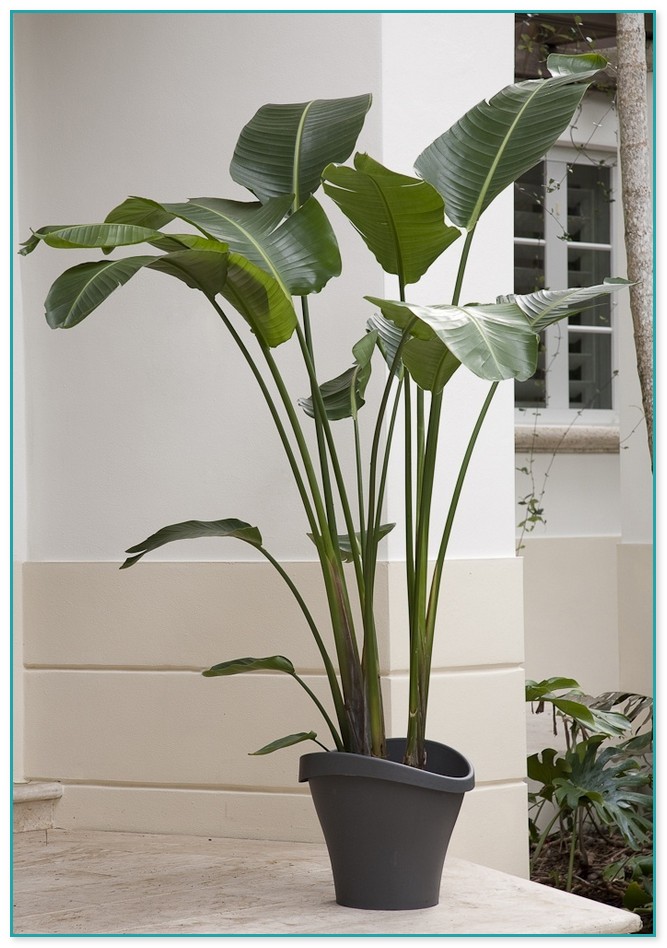Table Of Content
Ponytail palms are slow-growing plants but they can reach a formidable 3 or 4 feet tall indoors. When growing outside in higher light conditions they can reach an astounding 15 to 20-feet tall! Read my ponytail palm care guide to learn everything you need to know to grow a healthy ponytail palm. Caring for large house plants can seem daunting, but with a little bit of knowledge, it can be easy.
POPULAR CATEGORY
For many different size and pot options, purchase one from Fast Growing Trees. If you live somewhere too cold to grow agave outdoors, keeping one inside is a marvelous way to bring the American Southwest to your decor.
Dwarf Cavendish Banana Tree
Once known as dumb cane, this tropical, fast-growing plant is highly toxic to both humans and pets, so keep kids away. In fact, it can actually affect your ability to speak if you ingest it—thus the name. Despite all that, dieffenbachia is lovely, with large, pointy-tipped, oval leaves that are usually green covered with varying patterns of white or cream. The banana-like leaves on the bird of paradise are an attractive feature that makes them stand out.
Bold and Big Leaves for Indoor Spaces
This indoor plant performs best in light shade but can tolerate bright light also. With fertile, well-drained soil, as well as proper watering regime, the plant will thrive well. Monstera (aka the Swiss cheese plant) has been trending in the past few years because it's just plain beautiful! All monstera varieties prefer bright light but can adjust to lower light levels.
Enshrouded adds deadly dungeons and potted plants today in "first big update" - Rock Paper Shotgun
Enshrouded adds deadly dungeons and potted plants today in "first big update".
Posted: Tue, 26 Mar 2024 07:00:00 GMT [source]
Australian Umbrella Tree
These gorgeous tropical plants feature a wide range of speckled or splotched leaves in either yellow and green or white and green. Although they grow well in dark rooms, they prefer some bright, indirect light to keep them from getting too leggy. Looking for a low-light indoor plant that tolerates dark corners and neglect? This African native will do fine even if it only gets fluorescent light in an office or shop. It also tolerates dry conditions, so it's ideal for someone who travels frequently.

Tree Philodendron
28 Best Air-Purifying Plants For The Home - Country Living UK
28 Best Air-Purifying Plants For The Home.
Posted: Wed, 31 Jan 2024 08:00:00 GMT [source]
These indoor plants do well in bright - indirect sunlight but can also tolerate low light, though they may lose their variegations. With its spiky, sword-like leaves and tolerance for bright, direct light, the Yucca is a great option for adding height and texture to your indoor space. It prefers infrequent watering and can grow up to ten feet tall. As a member of the Araceae plant family, these plants love to climb and will grow best indoors in bright indirect light with slightly higher humidity. These native South American plants grow quickly outdoors and can be just as easily potted indoors near bright, indirect sunlight using a large pot.

Pothos and philodendron plants are often mistaken for each other as plants are incredibly similar in appearance and growing conditions. Pothos plants tend to have larger leaves than philodendrons and are covered in a waxy coating. Easy to care for, snake plants withstand periods of drought and rarely need repotting. Read all about growing snake plants in my snake plant care guide.
Fishtail palm
They thrive in bright direct light, making them perfect for south- or west-facing windows. You can enjoy fresh citrus at home, even if you don’t live in a warm climate, by growing a lemon tree indoors. Put it in a bright south-facing window and keep the soil moist. Also known as banyan trees, ficus audreys have emerald-green leaves and thick stems. Although they love bright, indirect sunlight, they can handle being in minimal direct sun and other unfavorable light conditions.
Monstera Deliciosa
Depending on the variety these plants can grow from 2 feet tall and 2 feet wide to a 5 feet tall and 5 feet wide. This large low light houseplant can really make a statement in your home if you let it grow to its full potential. The snake plant, or mother-in-law’s tongue is one of the most common houseplants grown in homes where there isn’t a lot of natural sun exposure.
They’re also a great way to bring literal and figurative life to an empty corner or awkward space. Plus, if you need a little more privacy, you can put them in front of the windows in lieu of curtains. We have a full growing guide for Croton plants if you need it. If you master the art of keeping these houseplants happy you'll be treated to beautiful foliage that produces lots of color and hues. They also grow pretty big and a large plant in the right setting is impressive. They're not hard plants to keep, and although slow growing will eventually reach impressive heights even when grown indoors.
A great indoor houseplant option if you live in a big city or polluted environment, Calathea Orbifolia is a purifying houseplant that removes toxins from the air. The large colored leaves grow up to 18 inches long and feature a shiny finish with silvery-white veins and a striking white outline. They prefer to be consistently moist but do not take kindly to being soaked for long periods. Fiddle leaf fig trees are notoriously temperamental and require a patient and experienced hand. They originate from the rainforest and prefer high heat and high humidity to thrive.
Strelitzia Nicolai is tolerant to well drained clay, loamy, sandy, slightly alkaline as well as acidic soils. This is definitely a plant that you wouldn’t want to miss in your living room. Featuring lush, jagged-edge leaves, this bushy palm will transport any room to the tropics. The fronds have sharp teeth at the base and are not ideal for small children or pets due to the poisonous berries that grow during the late season. It will also produce small calla like flowers, but these are inconspicuous and hidden under the foliage. The leaf shape of leopard plant is maybe its main asset, it gives you a very artistic look, which adapts to modern décor as well as rooms with a more traditional look.
Fertilise these plants every few months with a balanced, water-soluble fertiliser, following the package instructions. Do not keep your tree in front of doors and heating vents because the hot, dry air and cold drafts might lead to leaf fall. Pony Tail Palms are succulent house plants with elegant eye- catching characteristic. Calamondins are acid- loving plants, so use fertilizers specifically made for such plants. Fertilize your plants only when they are actively growing especially in April through September.
Who doesn't love having a luscious, green plant as the focal point of a room? Not only are they beautiful, but they can fill up blank walls, awkward corners, and bring some life into an otherwise lackluster room. Do you own any from my "best large indoor plants" recommendations already? Most Euphorbia are moderately fast growing, but they're not cheap when brought in a bigger size. So I think this is the ideal long-term ownership type of houseplant. Rhapis Excelsa or the Lady Palm, is less common than the usual palms you can buy, but it's a ridiculously easy plant to own.
Also, the plants can adopt to different light conditions hence you can place them anywhere in rooms. Jade plants are both trees and succulents with ability to purify air in your room. Always water your plants well and do not let the soil get soaked or dry completely.
A close relative of the corn plant, dragon trees (Dracaena draco) grow to about six feet tall indoors, with attractive strappy foliage. But even if you don’t ever see any fruit, they’re beautiful plants in their own right. Depending on the species you choose, citrus can grow anywhere from four to 10 feet tall indoors.

No comments:
Post a Comment